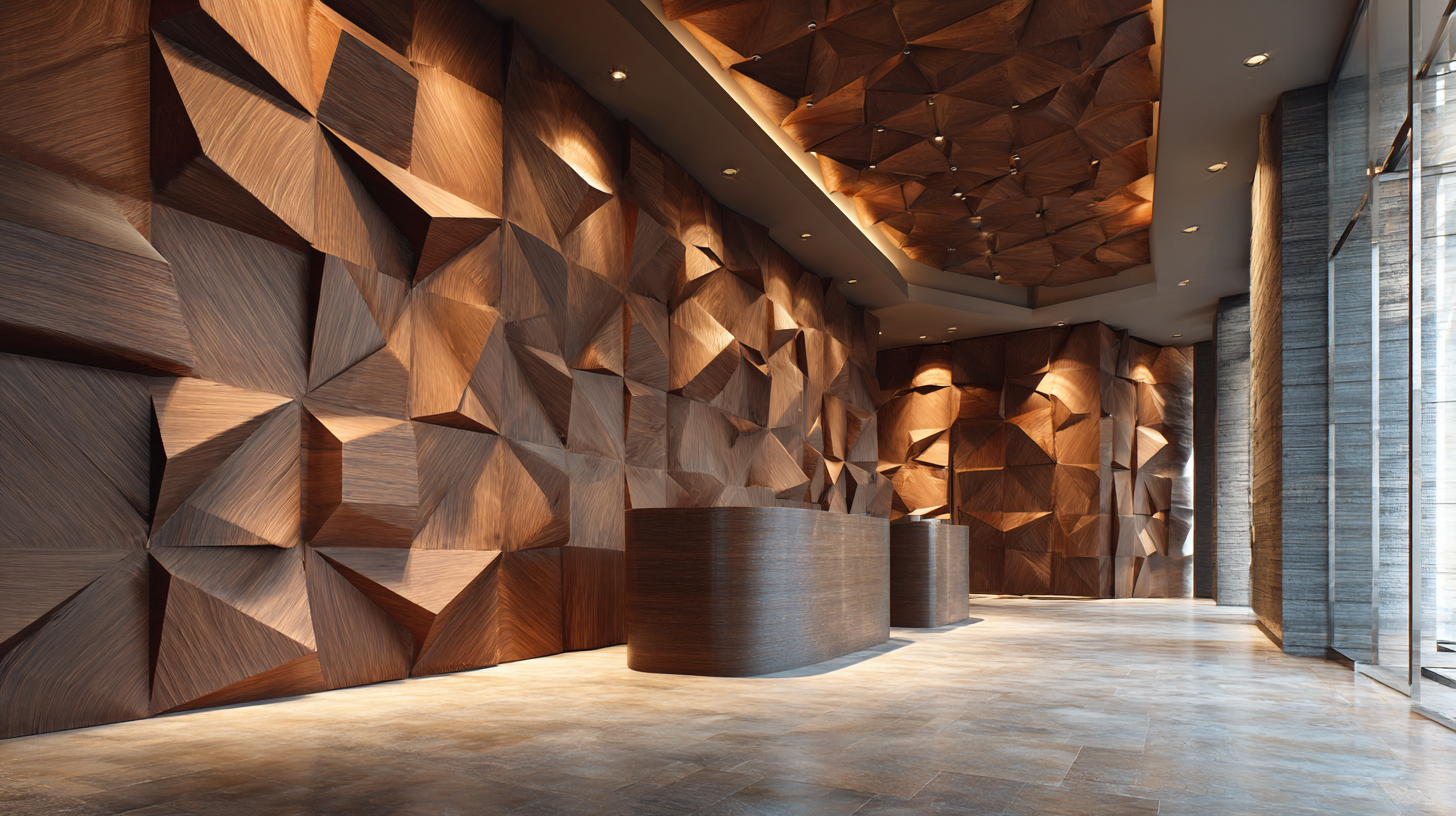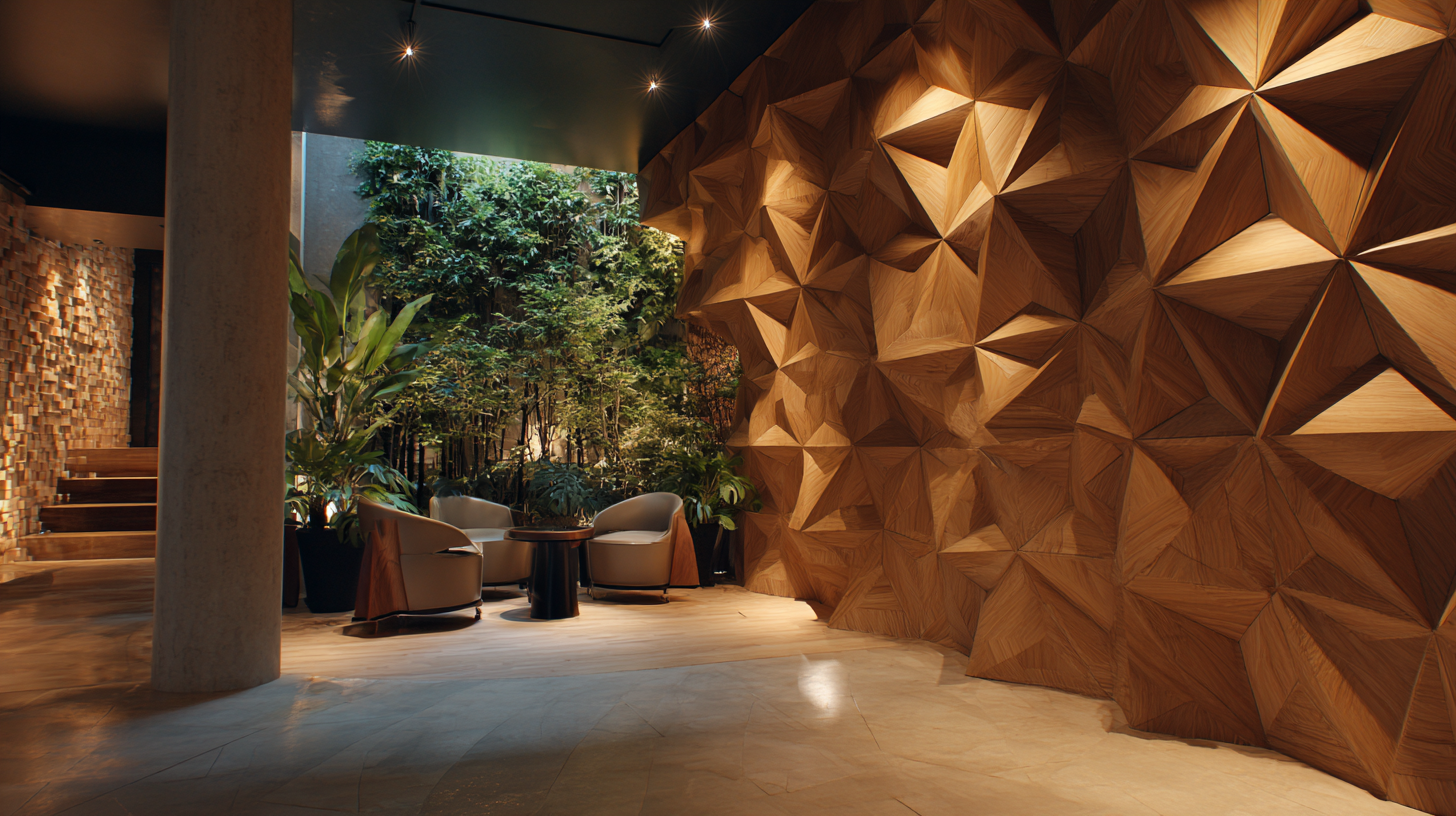 In recent years, the world of interior design has witnessed a
transformative shift
towards the incorporation of innovative materials, and one standout contender is the
Wood 3D Panel. These panels, celebrated for their captivating textures
and versatile applications, are redefining how we perceive and create spaces. As designers and homeowners alike look
for ways to infuse character and depth into their environments,
Wood 3D Panels offer an
eco-friendly solution
that not only enhances aesthetics but also promotes sustainability. This guide explores the future of designing
spaces with these remarkable panels, highlighting their benefits, design possibilities, and tips for integrating them
seamlessly into any project. Join us as we delve into the exciting potentials of Wood 3D Panels and discover how
they can elevate spaces in ways previously thought impossible.
In recent years, the world of interior design has witnessed a
transformative shift
towards the incorporation of innovative materials, and one standout contender is the
Wood 3D Panel. These panels, celebrated for their captivating textures
and versatile applications, are redefining how we perceive and create spaces. As designers and homeowners alike look
for ways to infuse character and depth into their environments,
Wood 3D Panels offer an
eco-friendly solution
that not only enhances aesthetics but also promotes sustainability. This guide explores the future of designing
spaces with these remarkable panels, highlighting their benefits, design possibilities, and tips for integrating them
seamlessly into any project. Join us as we delve into the exciting potentials of Wood 3D Panels and discover how
they can elevate spaces in ways previously thought impossible.
Wood 3D panels are becoming increasingly popular in modern design, thanks to their ability to add texture and dimension to various spaces. These panels come in a variety of types, each offering unique characteristics that can suit different design aesthetics. For instance, solid wood panels are prized for their durability and organic beauty, while engineered wood panels offer versatility and can be produced in various patterns and finishes. Materials like plywood and MDF (Medium-Density Fiberboard) are also common, allowing for intricate designs and cost-effective solutions.
The benefits of incorporating wood 3D panels into your design are manifold. They not only enhance visual interest but can also improve acoustics and contribute to better room insulation. With their ability to reflect light, these panels can create a feeling of spaciousness, making them ideal for both residential and commercial settings. Moreover, wood's natural aesthetic fosters a connection to nature, promoting a sense of warmth and comfort. As designers continue to explore the potential of wood 3D panels, they are redefining spaces with innovative textures and sustainable materials that resonate with contemporary lifestyles.

In recent years, 3D wood panels have emerged as a groundbreaking element in spatial design, revolutionizing how interiors are conceived and executed. These panels, with their ability to add depth and texture, transform flat surfaces into dynamic visual statements. Designers are increasingly opting for these materials not only for their aesthetic appeal but also for their sustainable nature, as many 3D wood panels are crafted from responsibly sourced timber. This trend aligns with the growing demand for eco-friendly design solutions that harmonize functionality with environmental mindfulness.
Incorporating 3D wood panels allows designers to explore new forms, shapes, and patterns that were previously limited by traditional materials. They can serve as focal points in a room or create immersive environments that invite exploration and interaction. Furthermore, these panels are highly versatile; they can be stained, painted, or left in their natural state to fit various design themes. As technology advances, the possibilities for customization and innovation in the use of wood panels continue to expand, making them a staple in modern interior design and a key contributor to creating engaging, multi-dimensional spaces.

In recent years, the design industry has increasingly turned its focus toward sustainability, and one of the most promising materials in this movement is wood 3D panels. These panels are not only visually striking but also support eco-friendly practices by utilizing responsibly sourced wood. By opting for wood panels from sustainably managed forests, designers can create stunning and innovative spaces while minimizing their environmental impact. This approach encourages a circular economy, where resources are used efficiently, and waste is reduced.
Moreover, the eco-friendly aspects of wood 3D panels extend beyond their sourcing. The manufacturing process of these panels can be optimized to use less energy and produce fewer emissions compared to traditional building materials. Many companies are also exploring the use of non-toxic finishes and adhesives, making the final product safer for both the environment and the occupants of the space. As architects and interior designers increasingly prioritize sustainability, wood 3D panels offer a versatile solution that aligns with eco-conscious values while creating beautiful, modern spaces.
Incorporating wood 3D panels into interior design has gained significant traction, with a projected market growth of 5.2% annually from 2021 to 2028, as reported by Grand View Research. Designers now leverage these panels for their aesthetic appeal and versatility. One creative approach involves utilizing these panels as accent walls. By selecting panels with varying textures and tones, designers can create striking focal points that add depth and character to a room. This not only enhances the visual interest but also provides a unique backdrop for furniture and decor.
Another innovative technique is the integration of wood 3D panels into functional spaces, such as office environments and commercial settings. A study by Statista indicated that 74% of consumers prefer environments that incorporate natural materials, leading businesses to adopt a more biophilic design approach. Designers can utilize these panels to create partitions or decorative ceilings, transforming mundane areas into inspiring spaces. The adaptability of wood 3D panels allows for endless combinations, fostering an ambiance that promotes productivity and well-being while making a stylish statement.
This chart illustrates the various design techniques for using wood 3D panels in different space types. The data shows the popularity of each design technique based on a survey of interior designers.
When it comes to revamping your interiors, installing wood 3D panels can elevate the aesthetic of any space significantly. This step-by-step guide will walk you through the process to achieve a flawless finish. First, ensure you have all necessary materials, including a level, measuring tape, adhesive, and trimming tools. Proper measurements are crucial, as they lay the groundwork for a professional-looking installation.
Before you start, consider these essential tips: Firstly, let the wood panels acclimate to the room's temperature and humidity for at least 48 hours prior to installation. This step will help minimize warping and ensure that the panels fit snugly. Secondly, always work from a reference line to maintain consistency across the wall, guaranteeing that each panel is aligned perfectly. Finally, when applying adhesive, don't skimp—ensure a generous but even layer for optimal adhesion and a seamless look.
As you progress, take your time with cuts and measurements. If you're unsure about specific techniques, consult online resources or instructional videos that show real-life installations, similar to how gamers share their experiences setting up a Minecraft server to ensure the best gameplay. This approach can provide clarity and confidence throughout your project, resulting in a stunning transformation of your space with wood 3D panels.
